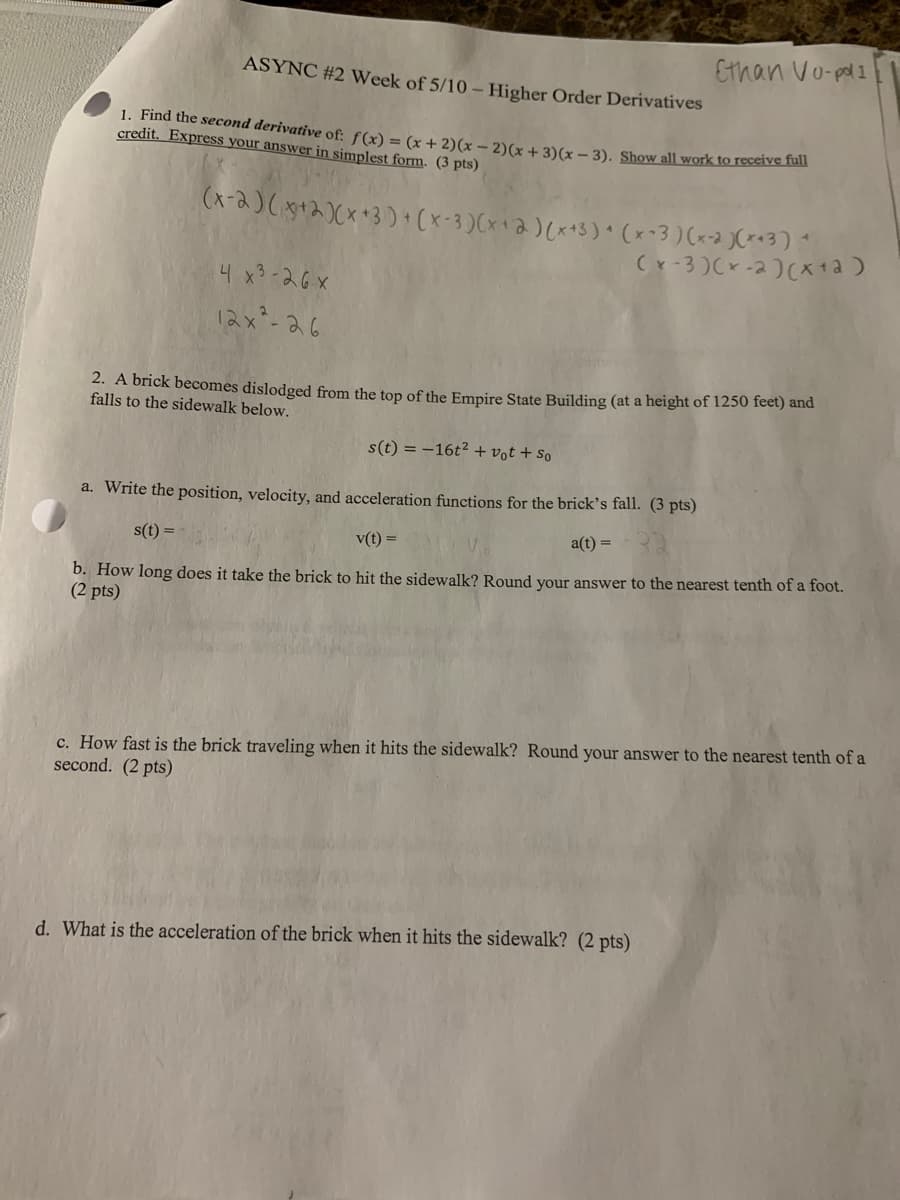2. A brick becomes dislodged from the top of the Empire State Building (at a height of 1250 feet) and falls to the sidewalk below. s(t) = -16t? + vot + So a. Write the position, velocity, and acceleration functions for the brick's fall. (3 pts) s(t) = v(t) = a(t) = b. How long does it take the brick to hit the sidewalk? Round your answer to the nearest tenth of a foot. (2 pts) c. How fast is the brick traveling when it hits the sidewalk? Round your answer to the nearest tenth of a second. (2 pts) d. What is the acceleration of the brick when it hits the sidewalk? (2 pts)
Percentage
A percentage is a number indicated as a fraction of 100. It is a dimensionless number often expressed using the symbol %.
Algebraic Expressions
In mathematics, an algebraic expression consists of constant(s), variable(s), and mathematical operators. It is made up of terms.
Numbers
Numbers are some measures used for counting. They can be compared one with another to know its position in the number line and determine which one is greater or lesser than the other.
Subtraction
Before we begin to understand the subtraction of algebraic expressions, we need to list out a few things that form the basis of algebra.
Addition
Before we begin to understand the addition of algebraic expressions, we need to list out a few things that form the basis of algebra.

Trending now
This is a popular solution!
Step by step
Solved in 2 steps with 3 images


